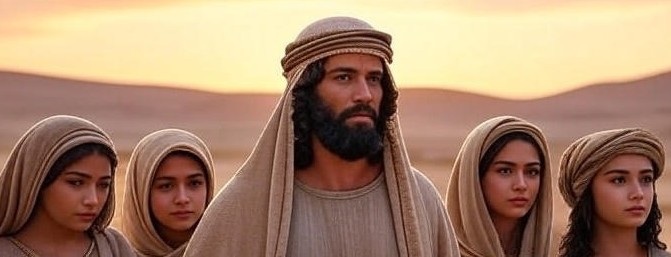For some theologians, the main stumbling block to accepting homosexuality is in Genesis, in how God created us male and female (Genesis 1:27) and instituted marriage between a man and a woman, Adam and Eve (Genesis 2:21-24). It’s pretty clear that’s what the first two chapters of Genesis describe. But there are good reasons for reading these texts in a non-exclusive way. In other words, we don’t need to assume that everything that falls outside the parameters of Genesis is necessarily contrary to God’s will. Let me explain why.
The creation account in Genesis 1
The first biblical account of creation, in Genesis 1, is very condensed. It only describes the created world in general terms or, as theologian Megan DeFranza puts it, “in broad brush strokes” [1]. Thus, for example, it talks of “day” and “night” without mentioning the intermediate state that is twilight. It doesn’t mention eclipses either. And when it describes the animal kingdom, it makes no reference at all to amphibians, creatures that live part of their lives in water and part on land. And obviously, as an ancient text, it doesn’t speak of microscopic animals such as protozoa, whose existence was totally unknown.

Photo by Wild Spirit on Unsplash.
Are we to assume that all these things, because they’re not included in the biblical account of creation, are contrary to God’s will? That they’re bad? Or the product of a “fallen world”? Of course not! Even though Genesis makes no mention of them, they need to fit somewhere in our theological scheme of things, our “worldview”, as part of God’s good creation in all its immensity and diversity.
And if we now know (because science clearly tells us so) that not all human beings are obviously or typically male or female, it shouldn’t be a problem either. Shouldn’t the same rule apply? Even though people that are intersex, gay, bisexual, trans, and so on, are not mentioned in Genesis, as part of what God has created, they should have their due place in our theological scheme of things.

Photo by David Todd McCarty on Unsplash.
If our approach is based not only on the biblical text but also on notions of natural order or natural law (this is the case, for example, in Roman Catholic theology), our understanding still needs to be rethought or expanded. Because homosexuality has been discovered to occur naturally in many species of birds and mammals. It’s a widely documented phenomenon [2].
Adam and Eve in Genesis 2
In a similar fashion, it makes very good sense to read Genesis 2 in a non-restrictive way. Before anybody panics, let me clarify that this does not mean denying that the vast majority of marriages are, and will continue to be, between a man and a woman, like Adam and Eve. There’s no need to question that.

Photo by Hector Reyes on Unsplash.
But does Genesis 2 give us sufficient grounds to reject all other modes of marriage? Can’t we just see Adam and Eve simply as a “typical couple”, rather than a “required model”?
Let’s not forget that the Bible itself shows us alternative types of “marriage” with no condemnation by God. Indeed, in some cases the practitioners were great “men of God”:
- Men with more than one wife: Jacob, Gideon, David, …
- Men with one or more concubines (servant-mistresses with a lower status than proper wives): Abraham, Jacob, David, …

Jacob and his four wives, as imagined by Grok.
It would seem that God had a rather relaxed attitude towards these other modes of marriage, acknowledged at the time, but contrary to the model exemplified by Adam and Eve. So maybe some of our preachers and Christian leaders ought to calm down a bit regarding other types of partnership, acknowledged today in the western world.
I realise that many find support for the “one man with one woman” model in Jesus’ words, when he spoke against easy divorce (“for any cause”, see Matthew 19:3-10), quoting phrases from Genesis 1 and 2. But his whole emphasis is on the permanence of the marital union. We need to work out to what extent it’s legitimate to take it out of context and use it to criticise gay marriage. (That’s something I intend to discuss in a future post.)
To sum up
As regards Genesis, I’d just like to leave you with the idea that it’s better to take the creation accounts as being illustrative but not necessarily normative, descriptive but not prescriptive. That is simply to exercise prudence in how we read them. It’s what I recommended in this previous post:
Lessons from Genesis? Caution is required!
(Image created by StockCake)


📌 If you would like to comment on this post (in the language of your choice), you can do so at the end of the Spanish version, here.
Notes
[1] DeFranza, Megan R.: “Response to Wesley Hill”, section “Adam, Eve, and Augustine”, in Two Views on Homosexuality, the Bible, and the Church, Zondervan, 2016 (general editor: Sprinkle, Preston), chapter 3.
[2] For more information see, for example, this entry and this list in Wikipedia, and this article on the National Wildlife Federation website.

